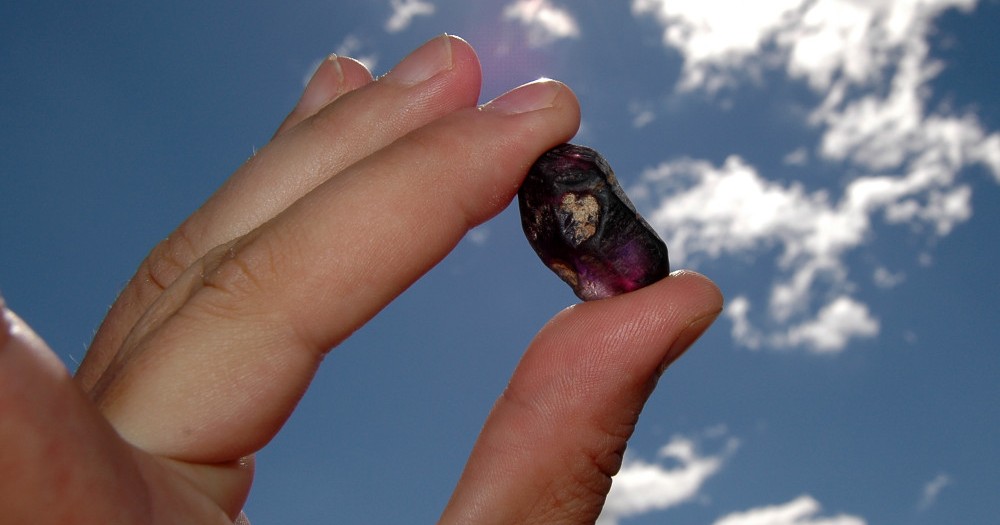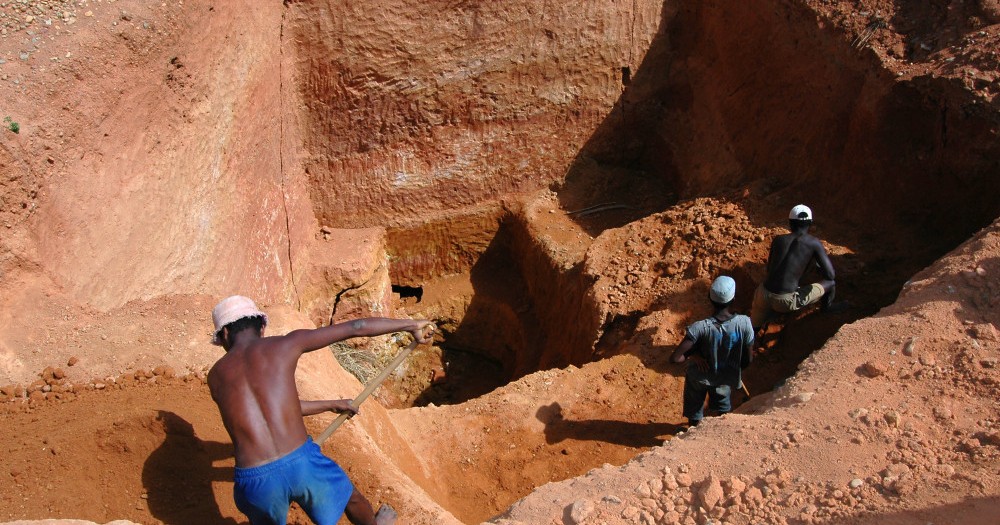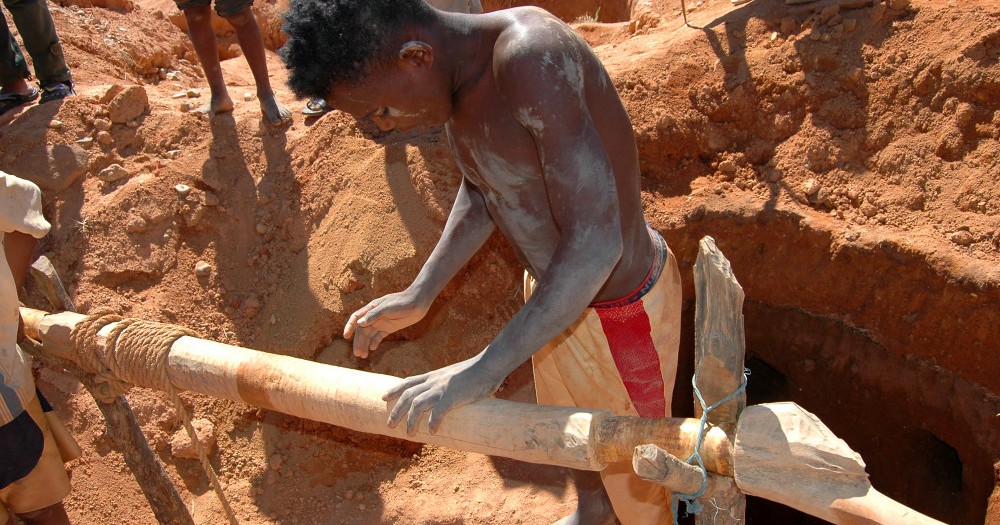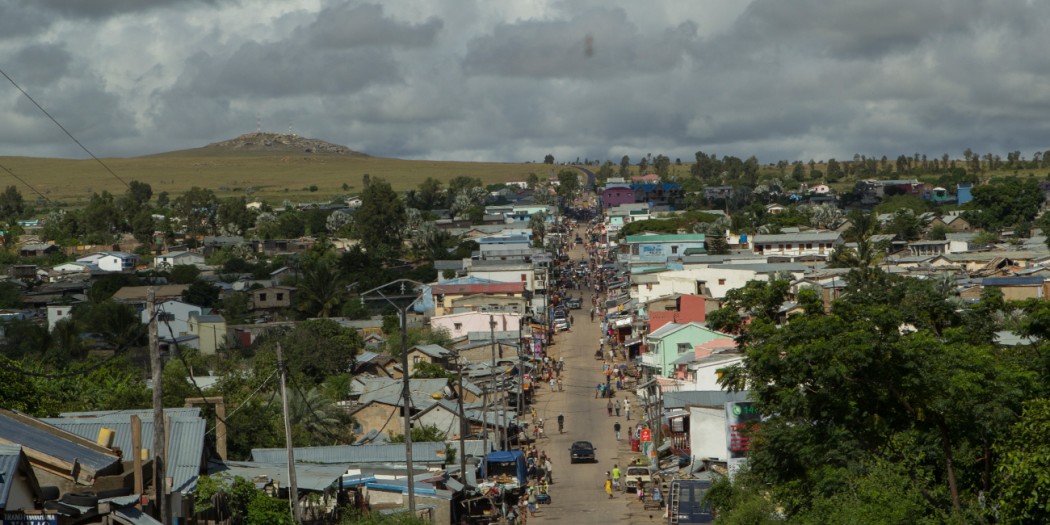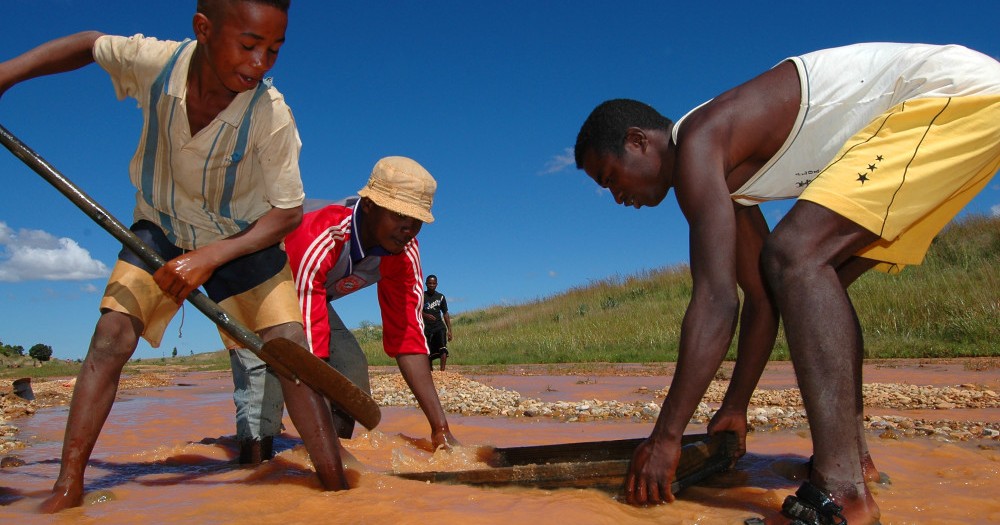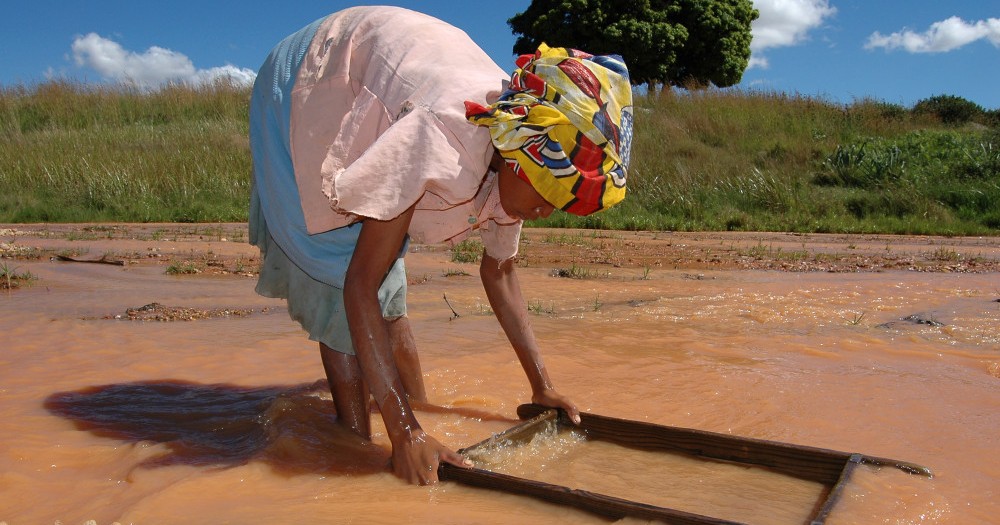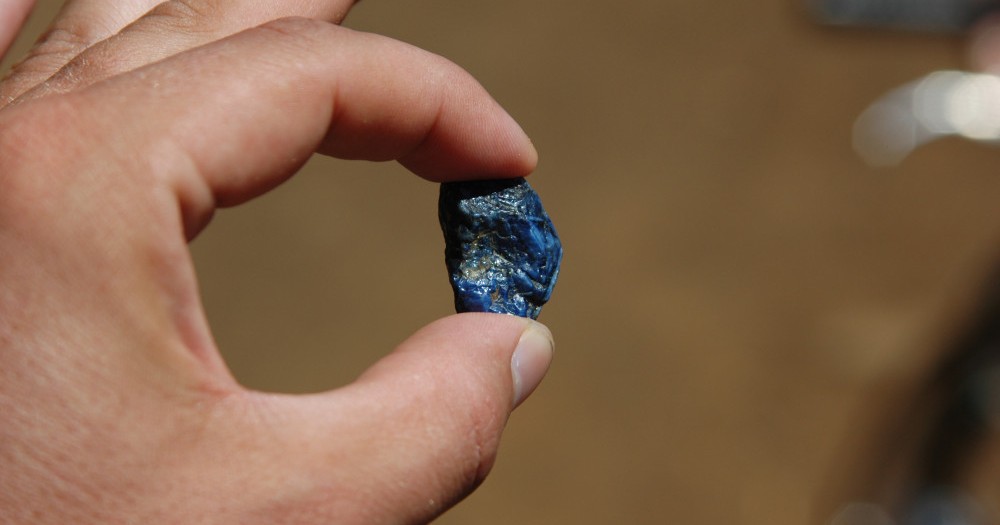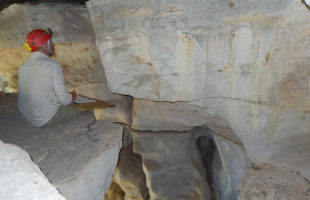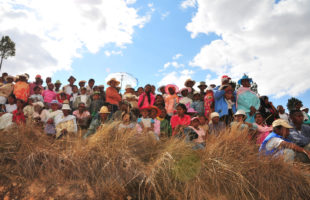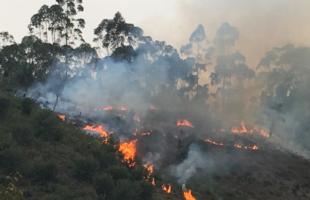It all began in a small hut village of the Bara in southern Madagascar: Ilakaka. The village still had less than a hundred inhabitants in the mid-1990s, and there was nothing to suggest that this would change quickly. Ilakaka lies in a flat, hot plain between Ihosy and Toliara (French Tuléar) on the river of the same name. This puts it in the middle of an area of about 100 km ² with a high gemstone deposit, and this should seriously change people’s lives.
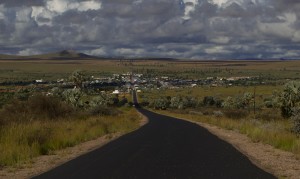
Since the late 1980s, gemstone deposits have been discovered all over Madagascar, and one or two gem rushes lured people here and there. In May 1998, however, the situation changed abruptly when a vein with very high-quality sapphires was found near Ilakaka. Within a very short time, the small village became Madagascar’s El Dorado. Thousands of people made pilgrimages here to find their happiness. Within less than two years, the population has grown to over 10,000 people. Soon the term “ville champignon” was coined because the chaotic settlement, which was more than two kilometres long, sprouted like a mushroom in a very short time. Today, the population of Ilakaka including the surrounding area is estimated at over 120,000 Madagascans and foreigners. Various ethnic groups of Madagascar can be found here, plus Thais, Sri Lankan, Swiss, Americans, South and West Africans. There is still no official census of citizens.
Ilakaka is currently the largest sapphire mining area in the world. Sapphires themselves are crystals of the mineral corundum, whereby the red crystals are called rubies. They are the second hardest and most valuable material in the world after diamonds. Its basic weight unit is the carat (ct), 0.2 g corresponds to 1 ct. However, the market price varies massively and can fluctuate between a few cents up to several thousand Euros. Sapphires exist in different colours, with the most frequently found sapphires being blue. Depending on the incidence of light, blue can vary from bright light blue to almost black, cornflower blue being the most sought-after colour. Small quantities of iron, titanium, chrome or vanadium, which have mixed into the crystal, give the colour; while colourless sapphires consist of pure corundum. The largest sapphire found so far in Madagascar weighed 17.9 kg.
| Zusatz | Saphirfarbe |
|---|---|
| Eisen | gelb und grün |
| Eisen + Titan | blau |
| Chrom | pink und rot |
| Titan | pink |
| Vanadium | lila |
| Vanadium + Eisen + Chrom | orange |
The newcomers to Ilakaka are usually bitterly poor and are attracted by the hope of rapid wealth. With the Taxibrousse they come from all parts of Madagascar. The drive from Antananarivo alone, the capital of Madagascar, takes two to three days. They build small huts out of palm trees, clay and waste. Stone houses are rare and mostly owned by richer shop owners along the Route Nationale. The Ministry of Mines actually leases claims of 2.5 km² to larger companies, which thereby acquire mining rights in the corresponding area. The owner of the property must be informed and a further lease agreement concluded with him before dismantling begins. In fact, hardly anyone on the ground is interested in who officially owns the claims. The tompontany, the landowners, lease individual shafts for a fee or a certain share of the sale of any finds.
The sapphire mining itself takes place in pits and shafts dug by the company itself. There are two mining methods: vovos are shafts operated by three or four workers (carrièremans), dug vertically into the ground with a diameter of almost one metre and reaching down to 25 metres.
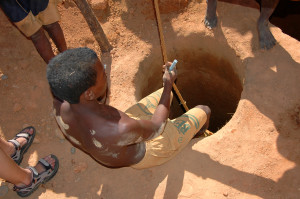
With a rope winch made of branches, a rope and a bucket, workers are transported down and gravel is transported up. At the bottom of the shaft, a shovel is used to dig in the light of candles or torches. Once the gem leading layer, the karoka, is found, the workers dig tunnels. There is a constant risk of collapse and suffocation in the narrow, small tunnels. The alternative to vovo is the décapage: Pits up to 40 m deep are dug in chains of 10 to 20 persons. Working in the mines is extremely dangerous. Nobody owns supporting scaffolds, ladders or railings, and if they do, they are self-made and insecure. The soapy-greasy soil along the river is hardly walkable in the rainy season, at this time of the year any sapphire mining is life-threatening. Again and again, workers fall to their deaths in unsecured shafts, suffocate under the ground or are buried alive by slipping debris.
Once the workers have transported gravel from the layer carrying the gemstone to the surface, the material is dragged to the river in buckets or bags. There the stones are washed out with sivanas (sieves with wooden frames, rarely turtle shells) and searched for gems by hand. Once a Carrièreman has actually found something, he goes to one of the numerous foreign shops along the RN7 in Ilakaka to sell it to a patron. Trust is extremely important when purchasing raw sapphires. Only with many years of experience a dealer is able to recognize the true value of a sapphire on the market. Of course, this also leads to too much fraud against the Carrièremans, who supply the raw material and cannot estimate the actual value. The quality of the sapphires from Ilakaka is partly comparable to cashmere sapphires and therefore very high. In Madagascar, extraordinary sapphires such as the “deep purplish pink beryl” are also found time and again. Furthermore, the variety of gemstones found in Madagascar is very high, more than 50 different species have been discovered, including spessartine and chrysoberyl.
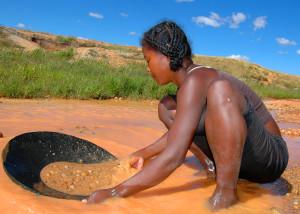
Most of the sapphires mined in Ilakaka leave Madagascar as raw material and end up in Sri Lanka or Thailand. There they are ground and resold. In Madagascar, there are only few workshops and hardly any jewellers who have grinding machines and sufficient expertise in the processing of raw stones. Most of the raw sapphires are certainly also smuggled illegally from Madagascar. Reliable data on the actual trading volume of sapphires in Madagascar still do not exist.
The earnings of the workers on the sapphires are often disappointing in the end, and larger or valuable finds are rare. In addition, there is the temptation of discos, shops, gambling and prostitution – the hard-earned money usually disappears just as quickly as it has come. There is no bank or similar institution in Ilakaka, and theft is ubiquitous. Many workers are unable to finance the journey home for themselves and their families to their own village and are thus forced to stay in Ilakaka. An endless vicious circle begins.
The hygienic situation in Ilakaka has been precarious for years. The huts and shacks have no toilets, and public sanitary facilities are used by hundreds of people. Controlled waste disposal systems do not exist, and the few local doctors are private practices and thus unaffordable for the majority of the inhabitants. Although wells were built years ago, they quickly became polluted. The only way to get clean drinking water is from a spring about seven kilometres from the city. A tanker truck now also runs daily from there and sells the water in the city – if you can’t afford it, you have to walk yourself. Cholera epidemics are plaguing the settlement and venereal diseases are widespread. AIDS is not known to many people at all, condoms are hardly ever used. Malaria kills countless children and adults every year. The few existing schools do not do justice to the many children, and often enough the children have to help their parents at work instead of going to school. More than half of the inhabitants of Ilakaka are therefore illiterate. A single police station is responsible for security and order, and unfortunately corruption is not uncommon due to the prevailing poverty.
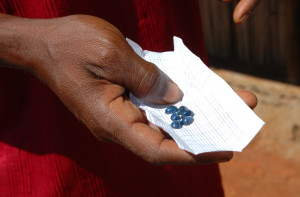
But the situation is not only catastrophic for the people themselves: Due to the uncontrolled mining of sapphires, the dry, arid soil around Ilakaka has become a bizarre landscape of holes, ditches and pits that is susceptible to erosion and little fertile. Where once there were forests, today there are only grass savannahs and mines left. People needed firewood, land for growing rice and manioc, and materials to build their huts. Slash-and-burn and deforestation have created areas that can be used for almost nothing more than the mining of precious stones. Apart from cattle breeding on overgrazed areas, traditionally dominated above all by the Bara ethnic group, the people of Ilakaka have hardly any alternatives to sapphire mining.
For some time there have been efforts by various non-governmental organizations in particular to help the people of Ilakaka, whether through education, basic medical care or the construction of wells, schools and rudimentary infrastructure. In the gemstone trade there are isolated signs that fair gemstones can find a market, e.g. there is a project near Ilakaka with the red rubies of Vatomandry. As Ilakaka borders the Isalo National Park, even protected land is in danger. Conversely, however, some small groups try to secure a regular livelihood for the local people through ecotourism. Finally, there is still a lot to be done to mitigate the consequences of sapphire intoxication.
 MADAMAGAZINE Your Magazine about Madagascar
MADAMAGAZINE Your Magazine about Madagascar
